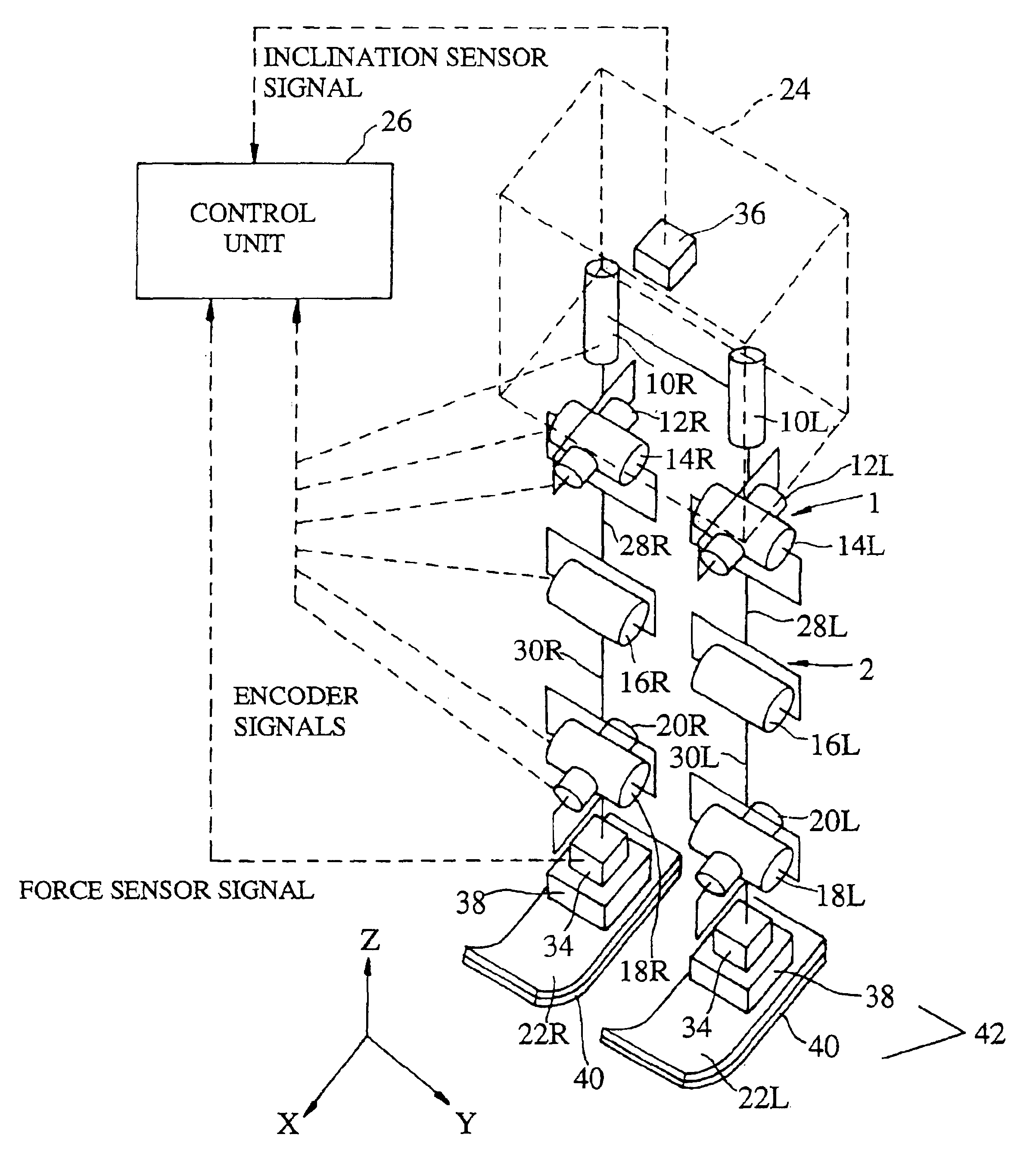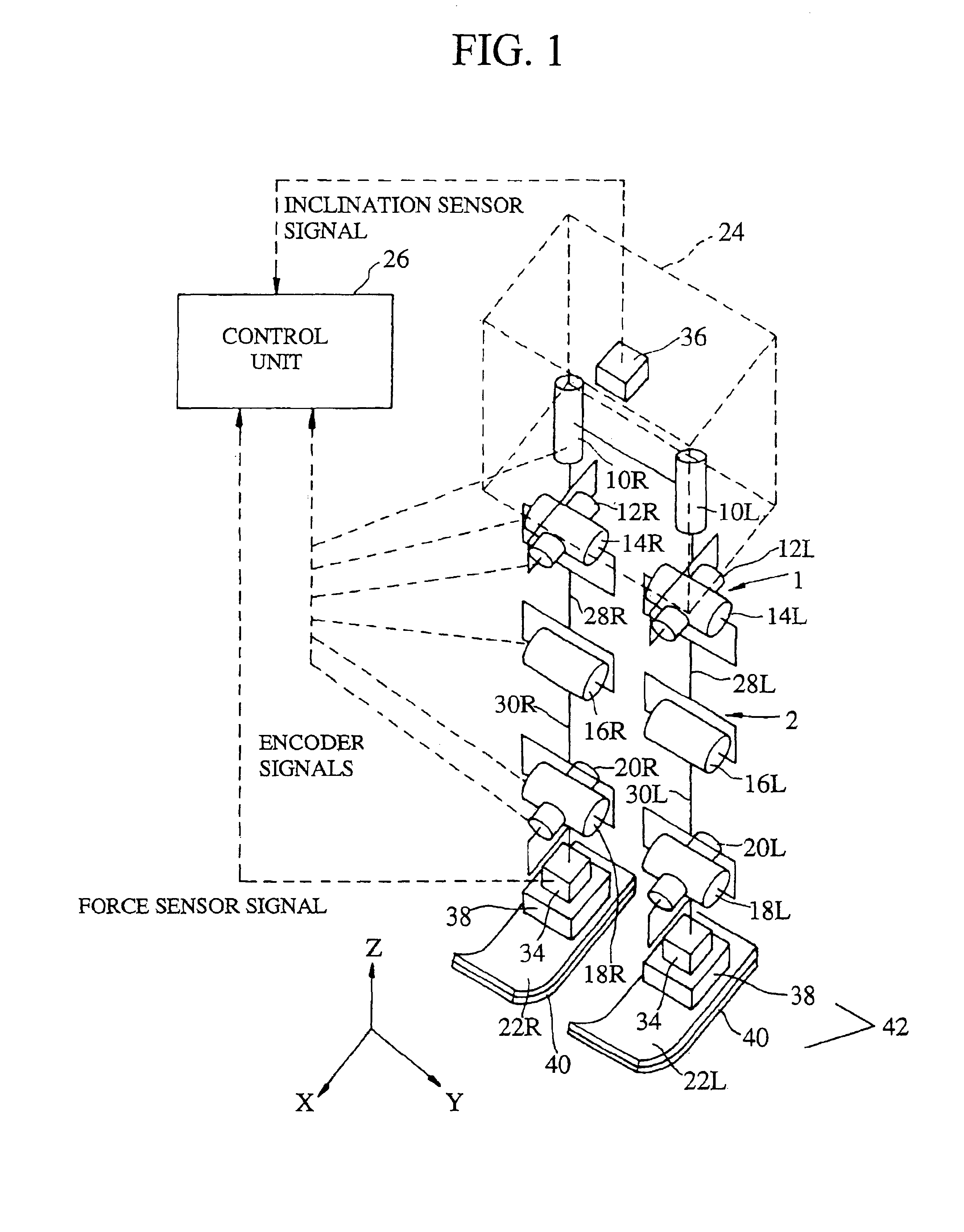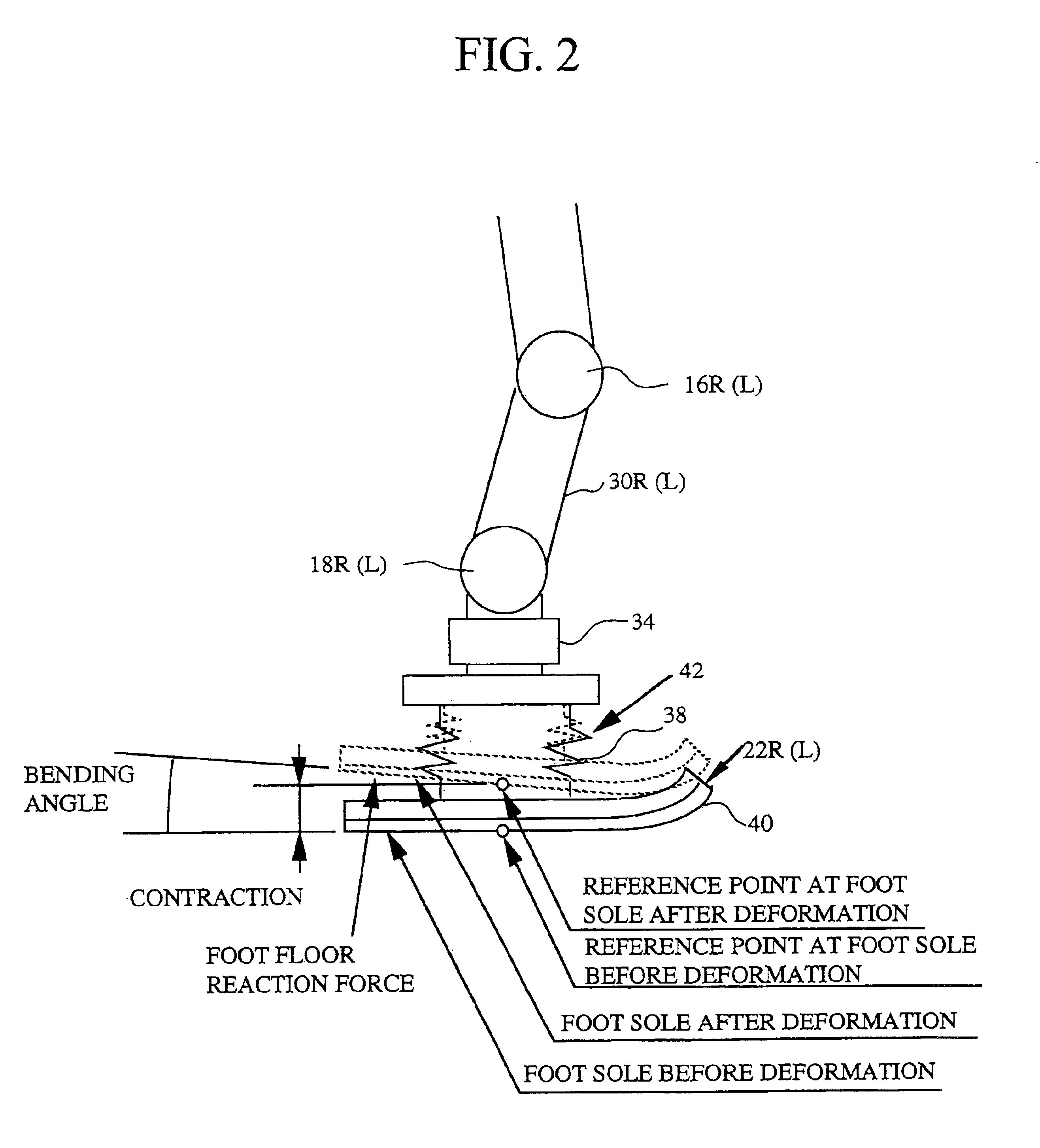Gait pattern generating device for legged mobile robot
a mobile robot and pattern generation technology, applied in the direction of electric programme control, program control, instruments, etc., can solve the problems of not meeting the dynamic equilibrium condition even in an approximated manner, the proposed technique failed to generate a gait that is different, and the margin of stability may occasionally drop
- Summary
- Abstract
- Description
- Claims
- Application Information
AI Technical Summary
Benefits of technology
Problems solved by technology
Method used
Image
Examples
second embodiment
FIG. 20 is a subroutine flow chart, similar to FIG. 15, but partially showing the calculation of the steady turning gait's initial divergent component in a gait generation system of a legged mobile robot according to the present invention.
It is stated in the first embodiment, that, instead of the three-material-point model, a single-material-point model can be used. In the second embodiment, based on the supposition that the performance of the on-board CPU (first arithmetic unit 60) is markedly high, instead of the three-material-point model, there is used the model (illustrated in FIG. 23) in which every link is set with mass. In other words, a non-linear model is used in the second embodiment to conduct gait generation.
Explaining the operation of the system according to the second embodiment, after conducting the same procedures as those shown from S10 to S28, via S26, of the flow chart of FIG. 12, the program proceeds to a subroutine flow chart of FIG. 20 to determine the initial...
third embodiment
It is possible to combine 3) and 4). A gait generation system of a legged mobile robot according to the present is made with focus on this.
FIG. 22 is a view, similar to FIG. 13, but showing partially the operation, more specifically, the setting of other steady turning gait, of the system according to the third embodiment.
Specifically, as illustrated in FIG. 22, the embodiment is configured in such a manner that the steady turning gait includes the standstill gait, and that the transitional gait (transition gait and includes any gait other than the steady turning gait) is inserted between the current time gait and the standstill gait (steady turning gait).
Thus, by setting three gaits comprising the current time gait, the transitional gait and the standstill gait, it becomes possible to effectively prevent the posture divergence. Further, since the gait is generated in such a way that the robot can shift to the standstill state at any time, it can realize a stopping motion with high ...
PUM
 Login to View More
Login to View More Abstract
Description
Claims
Application Information
 Login to View More
Login to View More - R&D
- Intellectual Property
- Life Sciences
- Materials
- Tech Scout
- Unparalleled Data Quality
- Higher Quality Content
- 60% Fewer Hallucinations
Browse by: Latest US Patents, China's latest patents, Technical Efficacy Thesaurus, Application Domain, Technology Topic, Popular Technical Reports.
© 2025 PatSnap. All rights reserved.Legal|Privacy policy|Modern Slavery Act Transparency Statement|Sitemap|About US| Contact US: help@patsnap.com



